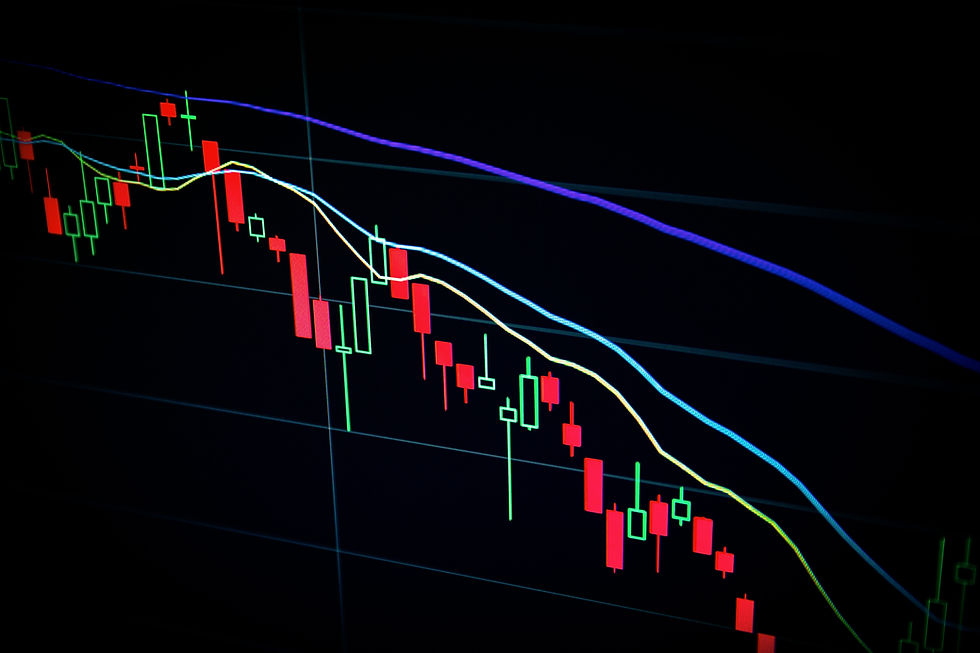
Quoted in prominent American media outlets, Larry McDonald, the creator of The Bear Traps Report, has expressed his belief that the stock market will face a significant collapse within the next 60 days. McDonald's insights carry weight partly due to his reputation as the author of a bestselling book detailing the downfall of Lehman Brothers.
Despite the possibility of McDonald having an interest in crafting dramatic market scenarios, it's important to scrutinize the validity of his arguments. Notably, his bleak outlook is shared by David Brady, who anticipates as much as a 30% drop in the S&P 500—an event that would completely negate the index's gains from the previous year, 2022. This prompts a closer look at the rationale behind such bearish perspectives.
McDonald traces the root of the impending market crash to continuous missteps in the monetary policies that were shaped back in 2021. During that period, the Federal Reserve implemented an emergency economic plan, which included the issuance of unprecedented amounts of money. This monetary influx was intended to stimulate the economy during a period of significant disruption caused by the global pandemic. The assumption was that consumer resilience was lower than it actually proved to be.
The resulting scenario was one where a limited supply of goods, due to pandemic-induced disruptions, collided with a surge in consumption fueled by high savings rates and government stimulus checks. This mismatch fueled a wave of inflation that the Federal Reserve is currently striving to manage by retracting some of its expansive measures.
Delving deeper into the potential crisis, McDonald refers to a specific analysis from his team, which tracks 21 indicators of systemic risk originally used by Lehman Brothers to gauge market stability. These indicators currently suggest an alarmingly high probability of a market crash occurring within the next 60 days. According to McDonald, the extensive withdrawal of capital from middle-class families has had a profound impact; he estimates that for every 1% increase in interest rates, about $50 billion is effectively removed from the spending power of these households.
Despite these challenges, the Federal Reserve has maintained a tough stance, continuing to implement the most aggressive series of interest rate hikes since the 1980s. Even though the consumer price index has decreased from its peak of 9.1% in June of the previous year, it remains significantly higher than averages seen before the pandemic.
The most recent economic data has surpassed expectations, suggesting that the endpoint for interest rates might be set higher than previously anticipated. This was highlighted by Federal Reserve Chairman Jerome Powell in his testimony before the Senate Banking Committee. Powell emphasized that the Fed is prepared to accelerate rate hikes if further data supports the need for such actions. Meanwhile, McDonald criticizes the current economic strategy, pointing out that high interest rates disproportionately affect different segments of the population.
He argues that while the wealthiest can mitigate these effects through investments in bonds, average Americans, particularly those with car loans, feel the pinch much more acutely. Furthermore, McDonald highlights that with current yields on 10-year treasury bonds, a $10 million investment can now generate $510,000 annually, presenting a more attractive and less risky alternative to the volatile stock market.
Finally, McDonald also anticipates a downturn in U.S. labor market data in the coming two to three months, which he believes will prompt investors to reevaluate the lofty valuations of S&P 500 companies. This expected shift in labor market dynamics could further destabilize confidence in the stock market, underlining the potential for a significant correction or crash.
McDonald's analysis suggests that current market conditions, combined with economic and policy trends, may not sustain the high valuations many stocks currently enjoy, leading to potential losses for unwary investors.
21.04.2024

Comments